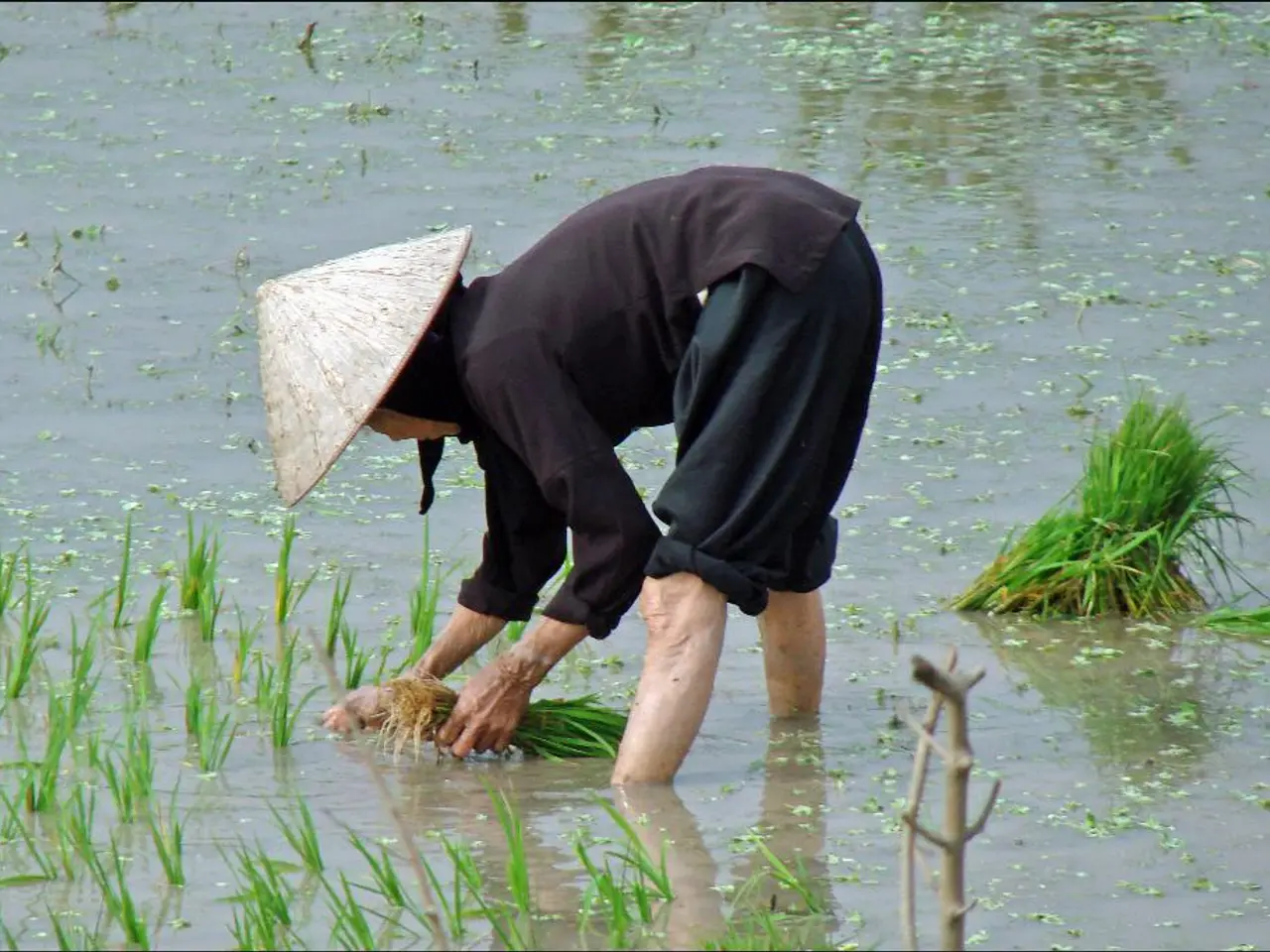Cultivate your edible plants in March
**Direct Sowing Seeds Outdoors: A Guide for Spring Planting**
As the weather warms up and days grow longer, it's time to start sowing seeds outdoors for a bountiful harvest of cold-hardy and root crops. Here's a step-by-step guide on how to direct sow seeds for crops like carrots, salad leaves, spring onions, beetroot, and more.
**Preparing the Soil**
Begin by loosening the soil and removing weeds to create a fine, crumbly texture. This ensures good seed-to-soil contact, vital for germination.
**Sowing Seeds in Shallow Drills**
For carrots and beetroot, sow seeds about 1/2 inch deep in rows spaced approximately 12 inches apart. For spring onions, sow seeds in drills spaced 12-18 inches apart. Salad leaves should be sown shallowly and evenly, with the row spacing varying depending on the specific variety.
**Thinning the Seedlings**
After germination, thin the seedlings to avoid crowding. For carrots, thin seedlings to about 2-3 inches apart along the drill. For spring onions, thin to about 2 inches apart once they have emerged.
**Moisture and Care**
Keep the soil consistently moist during germination and early growth to encourage strong establishment. Avoid letting the soil dry out to prevent bolting, especially important for salad leaves and related crops. Mulching can help maintain soil moisture and reduce weed competition.
**Timing**
Direct sow these crops in early spring or late summer for fall harvests. These plants prefer cooler soil temperatures and can tolerate some frost, so sow as soon as the soil can be worked in spring or in mid-summer for late season harvests.
**Avoid Transplanting Root Crops**
Avoid transplanting root crops like carrots and beets since root disturbance can damage them; this is why direct sowing is preferred.
**Planting Tomato Plants**
Meanwhile, tomato plants are being moved to the next stage of growth in 9cm pots filled with a mix of peat-free potting compost and John Innes no 3. Each seedling is carefully removed from its pot and placed in a deep hole made with a dibber.
**Potato Planting**
Plant potatoes in a trench or holes about 10cm deep, with the chits or small shoots facing up. In just a few weeks, they'll be ready for planting into their final position. To protect potatoes from frost, cover them with straw and compost.
**Harvesting and Maintaining**
Stop harvesting from young rhubarb plants by the summer to give them a chance to recover and strengthen for longer picking next year. Harvest rhubarb by gripping the stem near the base and giving it a firm twist to pull it away from the crown cleanly.
When the seedlings appear, give them a good soak and place them out on the bench. Once they've grown large enough, they'll be ready for planting. Sowing seed outdoors is being done this month for the mentioned crops.
In summary, direct sowing seeds outdoors supports robust establishment and healthy crop development for cold-hardy and root vegetables by minimizing transplant shock and optimizing growing conditions. Happy gardening!
Sow salad leaves in raised beds or home-and-garden areas for a continuous supply of fresh greens, ensuring proper moisture and regular thinning to maintain their lifestyle as leafy vegetables. With proper care and timely planting, direct sowing of spring onions in shallow drills will lead to a flourishing home-and-garden area, offering a delightful addition to your lifestyle through gardening.




